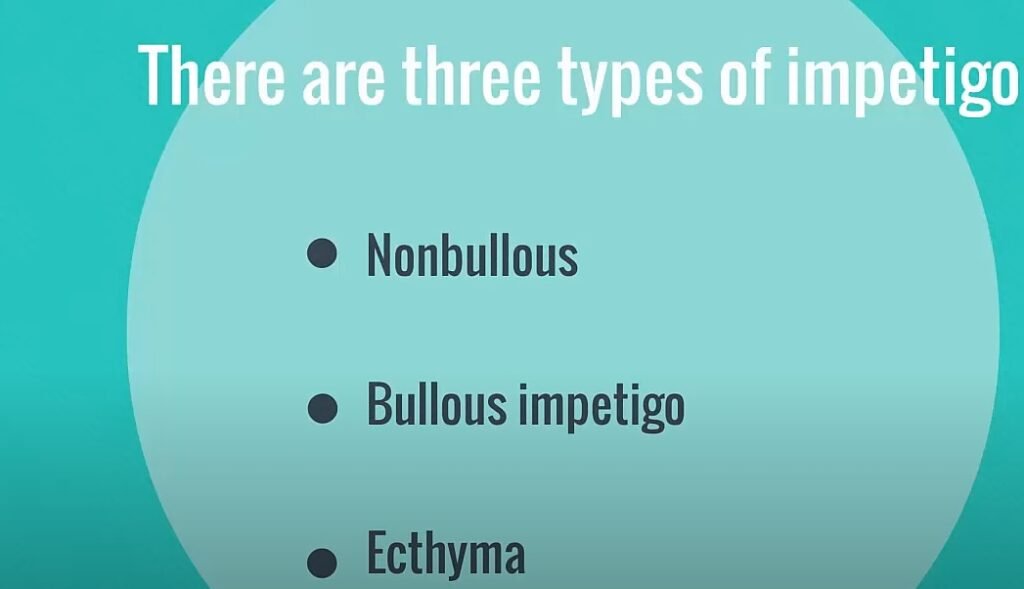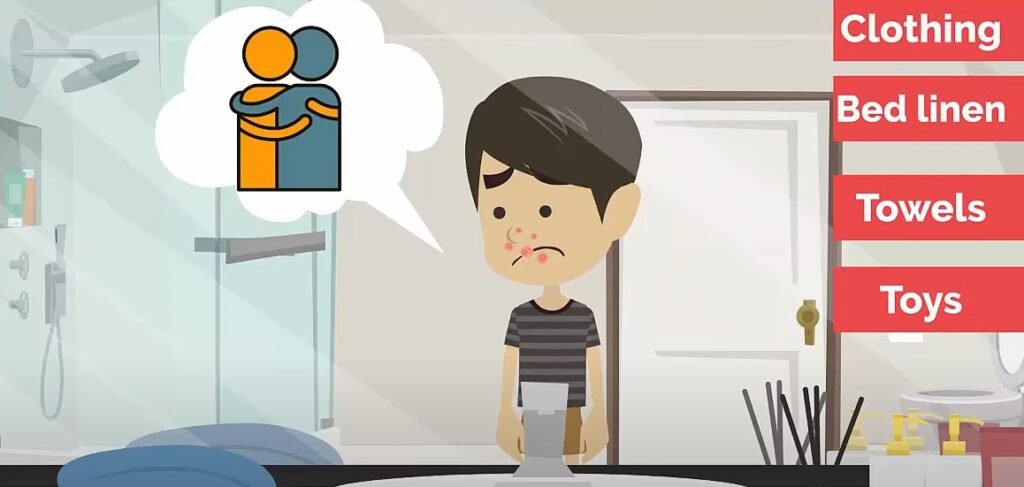Impetigo is a highly contagious skin infection that primarily affects children but can also occur in adults. Understanding the symptoms, causes, and treatment options for impetigo is essential for effective management and prevention.
Symptoms of Impetigo
Impetigo typically begins as small fluid-filled vesicles, commonly around the nose or lips. These vesicles can quickly spread to other parts of the face and body due to scratching, leading to the formation of yellowish scabs. Symptoms may include:
- Fluid-filled vesicles
- Crusting and yellowish scabs
- Itching and irritation
- Weeping and raw skin
Recognizing these symptoms early is crucial for initiating prompt treatment and preventing the spread of infection.
Causes of Impetigo
Impetigo is primarily caused by staphylococci and streptococci bacteria, which can spread rapidly through close contact. Additionally, impetigo may occur as a secondary infection in individuals with conditions such as atopic eczema, scabies, or head lice infestation. However, the underlying cause of impetigo often stems from constitutional factors, including malnutrition, poor hygiene, and impaired vitality.
Types of Impetigo

Impetigo can manifest in three main types:
- Nonbullous Impetigo: Characterized by patches of skin discoloration and sores that may break and crust over.
- Bullous Impetigo: Presents with large, fluid-filled blisters that can burst open, leading to the formation of crusts.
- Ecthyma: A severe form affecting deeper layers of the skin, causing large, painful blisters that break into sores and crust over, potentially leaving scars.
Causes and Risk Factors
Impetigo is caused by strains of Staphylococcus (staph) or Streptococcus (strep) bacteria. These bacteria enter the body through breaks in the skin, such as cuts, scratches, insect bites, or rashes. Close contact with an infected individual or contaminated items can facilitate the spread of impetigo. Certain factors increase the risk of impetigo, including living in warm, humid climates, having diabetes, compromised immune function, skin conditions like eczema, and playing contact sports.
Diagnosing
Diagnosing impetigo usually involves a visual examination by a healthcare professional. In some cases, a bacterial culture may be conducted to determine the type of bacteria causing the infection. Antibiotics are the primary treatment for impetigo, with topical antibiotics recommended for localized infections and oral antibiotics for severe or widespread cases. Home remedies such as essential oils may provide symptom relief but should be used with caution.

Prevention and Complications
Preventing impetigo involves practicing good hygiene, covering skin wounds, avoiding scratching open sores, and washing contaminated items thoroughly. Potential complications of impetigo include staphylococcal scalded skin syndrome, soft tissue infections, toxic shock syndrome, and rheumatic fever, particularly in adults.
Is Impetigo Contagious?
Yes, impetigo is highly contagious, especially through direct contact with the open sores or contaminated items. Proper hygiene and disinfection are essential to prevent its spread.
Treatment and Management
- Early and adequate treatment of impetigo is essential to prevent its spread and complications. Isolation of the affected individual, proper hygiene practices, and avoiding scratching are critical steps in managing impetigo. Treatment should focus on addressing constitutional factors through diet, hygiene, and fresh air. A holistic approach to treatment may include:
- The treatment of impetigo is essentially constitutional and it should consist of proper diet, correct hygiene and fresh air. Starting the patient on a two- or three-day all-fruit diet is the ideal method to start the treatment. In this regimen, he should be given fresh juicy fruits such as orange, apple, pineapple, peach, pear and papaya. In serious cases, however, it would be advisable to commence the treatment by a short fast on orange juice and water for about three days. After that, you might have an all-fruit diet for three more days.
- Following the fruit-only diet, the patient might start a well-balanced diet consisting of milk, seeds, nuts, grains,
- vegetables and fruits. The emphasis should be on fresh fruits, raw salads, fresh milk and whole meal bread. The use of these foods is of utmost importance in the future dietary. The patient should avoid tea, coffee, condiments and highly flavoured dishes as well as sugar, white flour products, denatured cercals and tinned or bottled foods.
- It will be desirable to administer warm-water enema daily during the first few days of the treatment to cleanse the bowels. All-natural treatments should be used to treat constipation if it is a habit.Treatment of impetigo using several home treatments has been found to be effective. The use of turnip (salgum) is one such remedy: A few chopped turnip pieces after thorough cleaning should be immersed in cooked rice water (kanji) or any natural vinegar for about six hours. They should then be eaten by the patient.
- Garlic is useful in relieving constant itching caused by this disease. This vegetable should be crushed and spread over irritated areas. One or two cloves of garlic should also be chewed for better results. Additional beneficial treatments for this illness include breathing exercises, mild exercise, daily dry friction, sun and air baths, and others. Daily dry friction bath can be taken with a rough dry towel or with a moderately soft bristle brush. If a brush is used, the procedure should be as follows: Take the brush in one hand and begin with the face, neck and chest. Then brush one arm, beginning at the wrist and brushing towards the shoulders. Now bend over and gently brush one foot, followed by the ankle and leg. Then do the other foot and leg, and next the hips and central portion of the body. Continue brushing each part until the skin is pink. Apply a swift back-and-forth motion with the brush to all body parts. It just takes a minute or so to complete the process. If a towel is used, it should be fairly rough, and the same above mentioned process should be followed.

- Dietary Modifications: Initiate treatment with an all-fruit diet followed by a well-balanced diet comprising milk, seeds, nuts, grains, vegetables, and fruits. Avoid processed foods, sugar, caffeine, and highly flavored dishes.
- Hygiene Practices: Maintain proper hygiene by using separate towels and avoiding harsh detergents. Warm-water enemas and natural remedies such as turnip and garlic may also be beneficial.
- Lifestyle Changes: Incorporate sun and air baths, daily dry friction baths, and light exercises to promote overall well-being and skin health.
Conclusion
Impetigo is a common and highly contagious skin infection that requires prompt treatment and preventive measures. By understanding the symptoms, causes, and treatment options for impetigo, individuals can effectively manage this condition and reduce the risk of transmission. Adopting a holistic approach to treatment, including dietary modifications, hygiene practices, and lifestyle changes, can promote skin health and overall well-being. Consult a healthcare professional for personalized treatment recommendations tailored to your individual needs.

Frequently Asked Questions (FAQs)
1. Is impetigo contagious? Yes, impetigo is highly contagious and can spread rapidly through close contact with an infected individual or contaminated objects.
2. How can impetigo be prevented? Practicing good hygiene, avoiding close contact with infected individuals, and maintaining a healthy lifestyle can help prevent impetigo.
3. What are the risk factors for impetigo? Risk factors for impetigo include poor hygiene, crowded living conditions, compromised immune function, and pre-existing skin conditions.
4. Can impetigo be treated at home? While mild cases of impetigo may respond to home remedies, severe or widespread infections require medical attention and antibiotic treatment.
5. How long does it take for impetigo to heal? With prompt treatment and proper hygiene, impetigo lesions typically begin to improve within a few days to a week. Complete healing may take up to two weeks.
